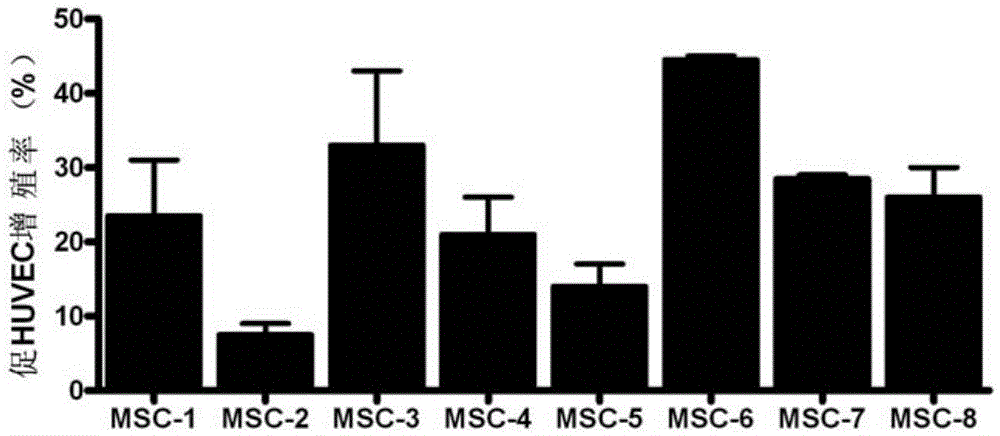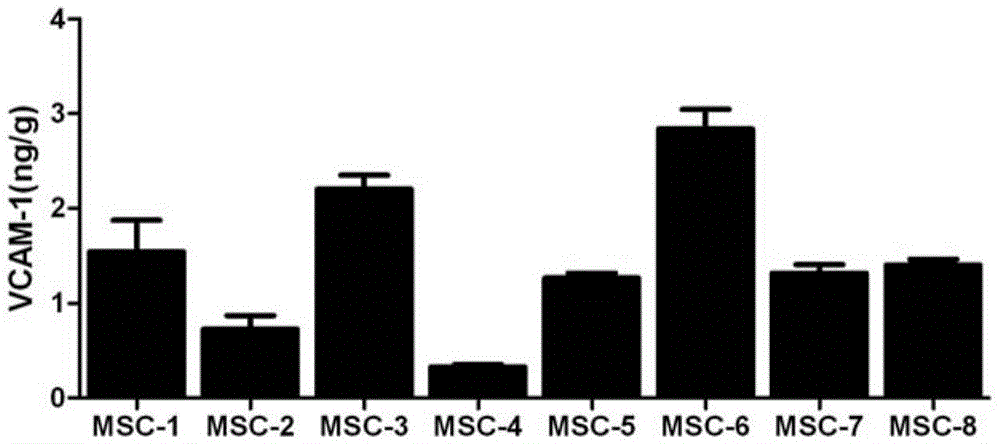Method for detecting angiogenesis promoting capacity of MSC through VCAM-1
A technology of VCAM-1 and angiogenesis, applied in the field of stem cells, can solve the problems of lack of detection and evaluation of the ability to promote angiogenesis, and hinder the clinical application of cells
- Summary
- Abstract
- Description
- Claims
- Application Information
AI Technical Summary
Problems solved by technology
Method used
Image
Examples
Embodiment
[0036] Step 1. Detect the ability of sample cells to promote endothelial cell proliferation
[0037] Umbilical vein endothelial (HUVEC) cells were planted in the lower cavity of the transwell system, and MSC cells were planted in the upper cavity. Three replicate wells were set for each group, and the proliferation of HUVEC was detected after co-culture. Because endothelial cells are cells that directly form blood vessels, the effect of sample cells (MSCs) on endothelial cells reflects its role in promoting angiogenesis. In the experiment, 8 MSC cells from different individuals were selected for the experiment. The cells used for detection were all P5 generation. The experimental results showed that different cells promoted the proliferation of HUVEC to varying degrees, but there were individual differences ( figure 1 ), see Table 1 for specific data.
[0038] Table 1. Promoting HUVEC proliferation rate of different sample cells
[0039]
[0040] Step 2, 3, 4.ELISA detect...
PUM
 Login to View More
Login to View More Abstract
Description
Claims
Application Information
 Login to View More
Login to View More - R&D
- Intellectual Property
- Life Sciences
- Materials
- Tech Scout
- Unparalleled Data Quality
- Higher Quality Content
- 60% Fewer Hallucinations
Browse by: Latest US Patents, China's latest patents, Technical Efficacy Thesaurus, Application Domain, Technology Topic, Popular Technical Reports.
© 2025 PatSnap. All rights reserved.Legal|Privacy policy|Modern Slavery Act Transparency Statement|Sitemap|About US| Contact US: help@patsnap.com



